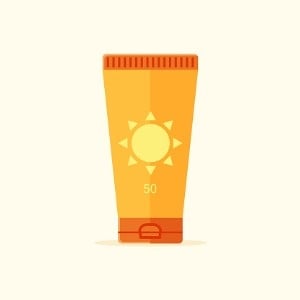
There's a homemade swap for most things these days; including sunscreen. The DIY version of sunscreen certainly seems simple. The main ingredients include essential oils, and shea butter topped off with a mineral-based sun shield called zinc oxide. These ingredients are blended and then you’re ready to use your own sunscreen!
As simple as this sounds, homemade sunscreen can harm your health. Sunscreen serves as a barrier that protects your skin from absorbing ultraviolet (UV and UVB) rays. UV rays ages skin while UVB rays can cause sunburn. Both can lead to harmful skin conditions like skin cancer and severe burns. Here are a few reasons why you should ditch your DIY sunscreen.
You can’t judge its effectiveness
Your sunscreen needs to protect you from UV and UVB rays and should be effective regardless of weather conditions. The only way to test this is in a lab and most people wouldn’t have a lab or professionals at home to test their DIY sunscreen. Guessing the effectiveness of your homemade sunscreen by looking at your skin is not accurate and doesn’t prove anything.
The process of checking if a sunscreen is effective:
- An SPF is chosen (e.g. SPF 30). The correct SPF blocker is added to sunscreen to get it to that level.
- The sunscreen is tested in a lab many times to ensure the sunscreen is effective.
- The sunscreen is tested on human volunteers who are exposed to a certain amount of sunlight. Their skin reactions are tested.
- The lab uses all the results to check if the SPF matches certain sunscreens.
You can’t determine the time of exposure
If you spend too much time in the sun without any sunscreen, your skin will start to turn red and burn. This is known as erythema or sunburn. The SPF of your sunscreen is an indicator of how long you can safely stay in the sun. For example, SPF 30 protects you 30 times more than if you go without sunscreen. Meaning: you will take longer to burn in the sun. In other words, it delays the burning process.
Without proper lab tests, there’s no way for you to know the SPF measurement of your sunscreen and how long you can safely stay in the sun. As sunburn can occur anywhere from six to 24 hours after exposure to the sun, you can’t determine how long you can be exposed by standing outside until you turn red either.
You can’t judge if it’s going to stay stable
When it comes to sun exposure, making sure that a sunscreen formula is effective and stable is important. When cosmetic products are made, they go through different processes to ensure that reactive ingredients like zinc oxide will stay stable over time. If the ingredients used in homemade sunscreen aren’t stable, it could affect how well it works when exposed to the sun. It not only needs to stay stable while it’s in the sun but also while on your skin. Only professionals working in a lab can test if ingredients will react badly to each other, so this makes a homemade sunscreen a bad option.





 Publications
Publications
 Partners
Partners










